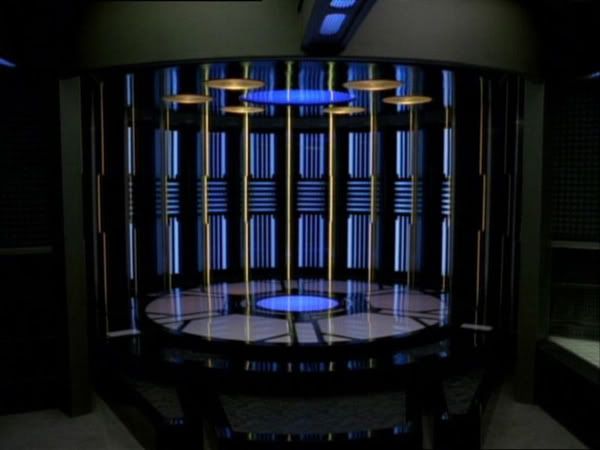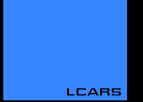6.1 Navigational Deflector
The Prometheus was equipped, during its construction, with the navigational deflector design from the Akira-class enhanced with elements from the Sovereign-class starship's navigational deflector design. The enhancements allow the navigational deflector to operate with a marked increase in efficiency at higher warp speeds.
In spite of the fact of that the deflector design was used for a vessel with a lower maximum warp speed the Starfleet designers in charge of the Prometheus Project felt that the design was still suitable (with minor modifications) since it was designed for a vessel with a wider beam measurement and a greater bow to stern length and a mass roughly 3.59411 times greater then that of the Prometheus.
The deflector is located just forward of the primary engineering spaces. Composed of molybdenum/duranium mesh panels over a tritanium framework (beneath the Duranium-Tritanium hull), the dish can be manually moved ten degrees in any direction off the ship's Z-axis. The main deflector dish's shield and sensor power comes from two graviton polarity generators located on Deck 10, each capable of generating 128 MW, which can be fed into two 480 millicochrane subspace field distortion generators.
Configuration of the dish differs from standard, with a setup geared toward high-speed and balanced against efficiency. The dual G-P generators are mounted with their own emitters that flank the main emitter assembly in the center of the dish.
6.2 Tractor Beam
Type: Multiphase subspace graviton beam, used for direct manipulation of objects from a submicron to a macroscopic level at any relative bearing to the Intrepid class. Each emitter is directly mounted to the primary members of the ship's framework, to lessen the effects of isopiestic subspace shearing, inertial potential imbalance, and mechanical stress.
Output: Each tractor beam emitter is built around three multiphase 15 MW graviton polarity sources, each feeding two 475-millicochrane subspace field amplifiers. Phase accuracy is within 1.3 arc-seconds per microsecond, which gives superior interference pattern control. Each emitter can gain extra power from the SIF by means of molybdenum-jacketed wave-guides. The subspace fields generated around the beam (when the beam is used) can envelop objects up to 920 meters, lowering the local gravitational constant of the universe for the region inside the field and making the object much easier to manipulate.
Range: Effective tractor beam range varies with payload mass and desired delta-v (change in relative velocity). Assuming a nominal 15 m/sec-squared delta-v, the multiphase tractor emitters can be used with a payload approaching 2,330,000 metric tonnes at less than 2,000 meters. Conversely, the same delta-v can be imparted to an object massing about one metric ton at ranges approaching 30,000 kilometers.
Primary purpose: Towing or manipulation of objects
Secondary purpose: Tactical/Defensive
6.3 Transporter Systems
Number of Systems: 7
Personnel Transporters: 3 (Transporter Rooms 1-3)
Max Payload Mass: 900kg (1,763 lbs)
Max Range: 40,000 km
Max Beam Up/Out Rate: Approx. 100 persons per hour per Transporter
Cargo Transporters: 2
Max Payload Mass: 800 metric tons. Standard operation is molecular resolution (Non-Lifeform).
Set for quantum (Lifeform) resolution: 1 metric ton
Max Beam Up/Out Rate (Quantum Setting): Approx. 100 persons per hour per Transporter
Emergency Transporters: 2
Max Range: 15,000 km (send only) {range depends on available power}
Max Beam Out Rate: 100 persons per hour per Transporter (300 persons per hour with 4 Emergency Transports)

6.4 Communications
Standard Communications Range: 30,000 - 90,000 kilometers
Standard Data Transmission Speed: 18.5 kiloquads per second
Subspace Communications Speed: Warp 9.9997
Holographic Communication System (see 4.3)




















